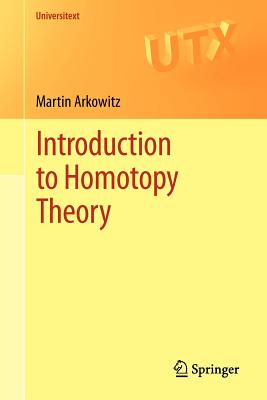Introduction to Topology: Second Edition
Gamelin, Theodore W., Greene, Robert Everist, Mathematics
- 出版商: Dover Publications
- 出版日期: 1999-02-16
- 售價: $870
- 貴賓價: 9.5 折 $827
- 語言: 英文
- 頁數: 256
- 裝訂: Quality Paper - also called trade paper
- ISBN: 0486406806
- ISBN-13: 9780486406800
-
相關分類:
數學
海外代購書籍(需單獨結帳)
買這商品的人也買了...
-
 Fundamentals of Data Structures in C++, 2/e (Paperback)
Fundamentals of Data Structures in C++, 2/e (Paperback)$1,390$1,362 -
 Fundamentals of Data Structures in C, 2/e (Paperback)
Fundamentals of Data Structures in C, 2/e (Paperback)$1,390$1,362 -
 Introduction to Algorithms, 3/e (Hardcover)
Introduction to Algorithms, 3/e (Hardcover)$1,750$1,715 -
 Computer Organization and Design MIPS Edition: The Hardware/Software Interface, 5/e (美國原版)
Computer Organization and Design MIPS Edition: The Hardware/Software Interface, 5/e (美國原版)$3,280$3,116 -
 A First Course in Probability, 9/e (NIE-Paperback)
A First Course in Probability, 9/e (NIE-Paperback)$1,260$1,235 -
 Ordinary Differential Equations (Paperback)
Ordinary Differential Equations (Paperback)$1,780$1,691 -
 Deep Learning (Hardcover)
Deep Learning (Hardcover)$1,650$1,617 -
 Matrix Analysis, 2/e (Paperback)
Matrix Analysis, 2/e (Paperback)$1,920$1,882 -
 Introduction to Calculus and Analysis, Vol. 1 (Paperback)
Introduction to Calculus and Analysis, Vol. 1 (Paperback)$2,590$2,461 -
 Introduction to Calculus and Analysis, Vol. II/1 (Paperback)
Introduction to Calculus and Analysis, Vol. II/1 (Paperback)$2,600$2,470 -
 Ordinary Differential Equations (The MIT Press)
Ordinary Differential Equations (The MIT Press)$3,130$2,974 -
 Classical Dynamics of Particles and Systems, 5/e (IE-Paperback)
Classical Dynamics of Particles and Systems, 5/e (IE-Paperback)$1,280$1,254 -
 Advanced Linear and Matrix Algebra
Advanced Linear and Matrix Algebra$2,580$2,451 -
 Classical Fourier Analysis
Classical Fourier Analysis$3,910$3,715
相關主題
商品描述
One of the most important milestones in mathematics in the twentieth century was the development of topology as an independent field of study and the subsequent systematic application of topological ideas to other fields of mathematics.
While there are many other works on introductory topology, this volume employs a methodology somewhat different from other texts. Metric space and point-set topology material is treated in the first two chapters; algebraic topological material in the remaining two. The authors lead readers through a number of nontrivial applications of metric space topology to analysis, clearly establishing the relevance of topology to analysis. Second, the treatment of topics from elementary algebraic topology concentrates on results with concrete geometric meaning and presents relatively little algebraic formalism; at the same time, this treatment provides proof of some highly nontrivial results. By presenting homotopy theory without considering homology theory, important applications become immediately evident without the necessity of a large formal program.
Prerequisites are familiarity with real numbers and some basic set theory. Carefully chosen exercises are integrated into the text (the authors have provided solutions to selected exercises for the Dover edition), while a list of notations and bibliographical references appear at the end of the book.
While there are many other works on introductory topology, this volume employs a methodology somewhat different from other texts. Metric space and point-set topology material is treated in the first two chapters; algebraic topological material in the remaining two. The authors lead readers through a number of nontrivial applications of metric space topology to analysis, clearly establishing the relevance of topology to analysis. Second, the treatment of topics from elementary algebraic topology concentrates on results with concrete geometric meaning and presents relatively little algebraic formalism; at the same time, this treatment provides proof of some highly nontrivial results. By presenting homotopy theory without considering homology theory, important applications become immediately evident without the necessity of a large formal program.
Prerequisites are familiarity with real numbers and some basic set theory. Carefully chosen exercises are integrated into the text (the authors have provided solutions to selected exercises for the Dover edition), while a list of notations and bibliographical references appear at the end of the book.































